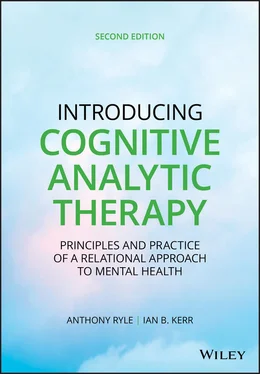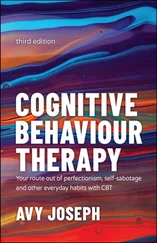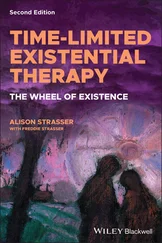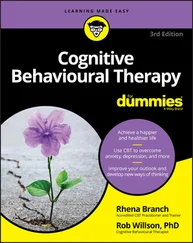1 Cover
2 List of Figures
3 About the Authors
4 Preface to the Second Edition
5 Preface to the Second Edition
6 Acknowledgments
7 The Structure of the Book
Further Information Further Information Further information about CAT and about the Association for Cognitive Analytic Therapy (ACAT) in the UK may be obtained from the website www.acat.me.uk in the UK, from local associations in other countries, and/or through www.internationalcat.org .
8 1 The Scope and Focus of CAT
Summary CAT Is an Integrated Model CAT Is an Integrated Model One source of CAT was a wish to find a common language for the psychotherapies. While there is a place for different perspectives and different aims in psychotherapy, the use by the different schools of ostensibly unrelated concepts and languages to describe the same phenomena seems absurd. It has resulted in a situation where discussion is largely confined to the parish magazines of each of the different churches or to the trading of disparaging insults between them. Despite the growth of interest in integration and the spread of technical eclecticism in recent years, the situation has not radically altered. CAT remains, we suggest, one of the few models to propose a comprehensive theory that aims to address and integrate the more robust and valid findings of different schools of psychotherapy as well as those of related fields such as developmental psychology and infant observational research, neuroscience, epidemiology, and sociology. The process of integration in CAT originated in the use of cognitive methods and tools to research the process and outcome of psychodynamic therapy. This involved the translation of many traditional psychoanalytic concepts into a more accessible language based on the new cognitive psychology. This led on to a consideration of the methods employed by current cognitive‐behavioral and psychodynamic practitioners. While cognitive‐behavioral models of therapy needed to take more account of the key role of human relationships in development, in psychopathology, and in therapy, their emphasis on the analysis and description of the sequences connecting behaviors to outcomes and beliefs to emotions made an important contribution. Psychoanalysis overall offered three main important understandings, namely its emphasis on the relation of early development to psychological structures, its recognition of how patterns of relationship derived from early experience are at the root of most psychological distress and difficulty, and its understanding of how these patterns are repeated in, and may be modified through, the patient–therapist relationship. Neither cognitive nor psychoanalytic models, however, appeared to acknowledge adequately the extent to which individual human personality or the “Self” is formed and maintained through relating to and communicating with others and through the internalization of the meanings developed in such relationships, meanings which reflect the values and structures of the wider culture. In CAT, the Self is seen to be developed, constituted, and maintained through such interactions.
CAT Is a Collaborative Therapy CAT Is a Collaborative Therapy The practice of CAT reflects these theoretical developments. It has been suggested that, in contrast to the traditional polarization of health care professionals between those who are good at “doing to” their patients (e.g., surgeons and perhaps some behavior therapists) and those who are good at “being with” their patients (e.g., many dynamic psychotherapists or nurses involved in long‐term care), the CAT therapist aims to be good at doing with their patients (Kerr, 1998a). This highlights the fact that CAT involves hard work and commitment for both patients and therapists, and also the fact that much of this work is done together and that the therapy relationship itself plays a major role in assisting change. The ways therapists interact with and describe their patients is important for the quality of the therapeutic relationship and transcends the “application” of any particular technique. Any techniques used, and how they are employed, must convey human compassion, acknowledgment, and value. CAT therapists therefore encourage patients to participate, possibly in ways that are challenging, to the greatest possible extent in their therapies. For many patients this may in itself represent a quite new, or previously “forbidden,” experience. Such a therapeutic approach may also feel unfamiliar and uncomfortable for many health care professionals. Therapists have usually learned helpful ways of thinking and being and are, in some sense, experts in activities that parallel parenting or teaching. But our patients are not pupils or children and their capacities need to be respected, empowered, and enlarged through the joint creation of new understandings, challenges to longstanding assumptions, acquisition of new “coping patterns,” and through a new relational experience.
CAT Is Research Based CAT Is Research Based The historic failure of psychodynamic therapists to evaluate seriously the efficacy and effectiveness of their work and their resistance to doing so, partly for understandable reasons, led in the past to a lack of serious support in the NHS (National Health Service) in the UK for therapy in general. It appears also to have contributed, paradoxically, to the current frequently indiscriminate and uninformed application of an “evidence‐based” paradigm, important as evidence is, that is crude and problematic given the multidimensional complexity of mental disorder and treatments for it, and also given the increasing recognition of “common factors” in effective therapies and treatments (Castonguay & Beutler, 2006; Gabbard, Beck, & Holmes, 2005; Greenberg, 1991; Lambert, 2013; Norcross, 2011; Parry, Roth, and Kerr, 2005; Roth & Fonagy, 1996; Wampold & Imel, 2015). The outcome research that led on to the development of CAT pre‐dated these developments, originating in a program dating back to the 1960s that aimed to develop measures of dynamic change. While the “formal” research base for CAT remains relatively slender (Calvert & Kellett, 2014), the evolution of the model over the last 30 years has been accompanied by a continuous program of largely small‐scale but important research into both the process and outcome of therapy, and also the use and evaluation of CAT in contextual or consultancy type approaches, and this continues on an expanding scale. In addition, a number of more “formal” randomized controlled trials have been successfully undertaken in recent years, notably for “borderline personality”‐type disorders (see Chapter 10 ). One consistent research finding has been the apparently superior effectiveness of CAT in engaging “difficult” or “hard to help” patients' of whatever diagnosis, and retaining them in treatment (Calvert & Kellett, 2014).
CAT Evolved from the Needs of Working in the Public Sector and Remains Ideally Suited To It CAT Is Time‐Limited CAT Offers a General Theory, Not Just a New Package of Techniques CAT Has Applications In Many Clinical and Other Settings
9 2 The Main Features of CATSummary Background The Early Development of CAT Practice The Theoretical Model The Development of a Vygotskian and Bakhtinian Object Relations Theory The Development of the Basic Model of Practice The Development of Sequential Diagrammatic Reformulation (“Mapping”) The Course of Therapy Time Limits and Ending The Clinical Aims of CAT
10 3 The CAT Model of Development of the SelfSummary The CAT Concept of Self Neuroscience Research and the Self The Permeability of the Self Cultural Relativity of Models of Self Studies of Infant Development The Contribution of Vygotsky's Ideas Developmental Studies of Role Acquisition Bakhtinian Contributions Contrasts with Other Concepts of Self Genetics and Temperament Our Evolutionary Past The Evolution of Cognitive Capacities and of Culture Evolutionarily Pre‐Programmed Psychological Tendencies
Читать дальше












